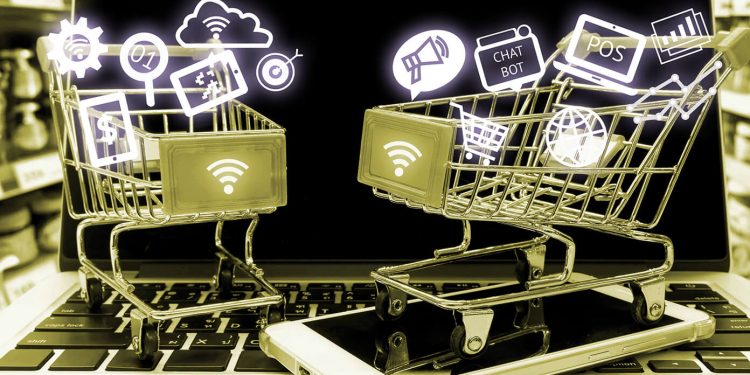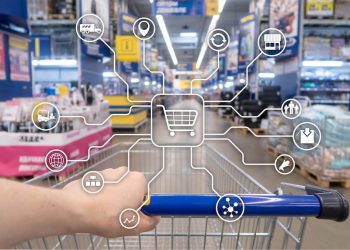As the retail industry recovered from the shocks of the global pandemic, it saw some significant transformations. From businesses rewiring their modus operandi to how they dealt with changing consumer habits, 2021 was an exceptional year for the retail industry.
As we advance in 2022 and the retail industry looks to optimize its online and offline operations to drive sales, several new trends are expected to shape retail businesses.
This article explores how things could move in the foreseeable future and the trends that will dominate the retail industry.
Accelerated Delivery
Initially adopted by retail giants such as Amazon, same-day delivery or next-day delivery is the new normal today. Retailers big and small are both trying to figure out ways to meet the fast delivery expectations of their customers. In a U.S. consumer survey, 44% of the customers didn’t want to wait for more than two days for their order. The Covid-19 pandemic has spurred the online shopping trend, which means retailers who wish to be successful in 2022 and beyond must find ways to deliver on expectations.
They must design processes to make order fulfillment as agile as possible. One way is to leverage customer data to predict demands and stock products accordingly. Another good approach is to deliver to different segments at different speeds.
Hyper-personalized shopping experience
As retailers take a more comprehensive look at consumer data, the personalization trend is expected to grow in the upcoming year. Therefore, the retailers must use customer data to create simple, personalized, and streamlined shopping experiences. By creating tailor-made experiences based on customer insights, retail businesses can fill the void that a salesperson would otherwise fill in a physical store. For example, if a customer searches your online store, you can show them personalized recommendations based on their past purchases and recent searches.
Redesigned offline Stores to Make Customers Feel Safe
As the market gains normalcy, the main focus of the offline stores will be on redesigning their spaces to keep customers safe and provide them with a stress-free shopping experience. Despite the rise in online shopping trends, many customers still prefer to touch and see the products before buying them. But they hesitate to visit physical stores due to the fear of the virus. Therefore, the retailers need to alter their delivery systems as per the safety guidelines provided by public health officials. The additional costs associated with safety and cleanliness measures will undoubtedly affect their bottom line but ensuring public safety will also encourage more customers to visit their stores.
Increase in Contactless Payments
Contactless payments methods were there before the pandemic, but their use has soared in the past two years. Consumers have now experienced the advantages of contactless payment, so this trend is unlikely to wane even after things get back to normal. This trend is suitable for public health and safety and provides convenience and speed to the customers, enhancing their shopping experience.
Increased adoption of AI
During the pandemic, Artificial Intelligence helped retailers meet the needs of their customers, ensure smooth operations and improve their bottom line.
Some of the uses of AI in retail include dynamic outreach, adaptive homepage, inventory management, interactive chat, guided discovery, visual curation, customer engagement, conversational support, and more. With so many benefits, AI is no doubt rapidly taking center stage in major retail organizations.
More retailers leveraging cloud computing
To keep thriving under challenging times, retailers needed to extend their reach to customers with multiple stores and efficiently manage their supply chains. Cloud computing emerged as a cost-effective technique, ensuring seamless operations and improving retail management systems. Now that the retailers are aware of the benefits of this technology, it is here to stay and grow in 2022 and beyond. Some of the benefits it brings to the retail industry are – Cost-effective, streamlined operations, real-time reporting, flexibility to scale up and down, and many more.
Personal Assistants and voice search will be changing retail dynamics
As per Google’s findings, 27% of users now use the voice search feature on their mobile devices. Today’s consumers find it more convenient to talk into their phones rather than type. Therefore, voice search and personal assistants will be significant trends in 2022. To stay competitive, retail businesses need to shift their focus to designing more appealing content for personal assistants. Also, they must curate their offerings to increase their chances of getting more visibility while consumers search for products.
Social Commerce will level up
Instagram shops provide users with an intelligent shopping module that allows them to effortlessly shop for the outfits and accessories their favorite influencers wore, home decor they used, and more. With Instagram taking it to the next level with its new shopping feature called “Product Drops,” users will be directed to an in-app feed of brand-new products.
What this feature means for the retailers is that they can now make their products easily discoverable on Instagram with the help of stories and posts. They can leverage this medium to customize and personalize the shopping experience.
A Shift towards Omnichannel Marketing
As per statistics, businesses that adopted omnichannel marketing in recent years achieved 91% more year-over-year customer retention rates. Keeping these results in mind, retail companies must spread their marketing campaigns across multiple channels. They should create strategies to reach customers with different channels at different stages of their customer journey to provide customers with a seamless marketing experience.
Sustainability is the new mantra
The push for sustainability has been growing for the past few years and will continue in the coming years. Retailers must let consumers know what a product is made out of, who are the people making it, and how they can reuse and recycle it once its use is over.
With severe climate changes occurring worldwide, it’s more important than ever for retail businesses to limit the impact of climate change. Taking initiatives like social-responsibility audits at factories and increased attention to sustainability measures can help them earn customers’ trust and set good examples for others in the industry.
Conclusion
This article looked at the key trends that will shape the retail industry in the coming years. If you are in the retail industry, keeping abreast of these trends and even adopting them will give you a competitive edge and increased chances of being noticed by customers in this immersive and fast-changing world.








